SLUSET4B December 2022 – March 2024 BQ25758
PRODUCTION DATA
- 1
- 1 Features
- 2 Applications
- 3 Description
- 4 Pin Configuration and Functions
- 5 Specifications
-
6 Detailed Description
- 6.1 Overview
- 6.2 Functional Block Diagram
- 6.3
Feature Description
- 6.3.1 Device Power-On-Reset
- 6.3.2 Device Power-Up From Battery Without Input Source
- 6.3.3 Device Power Up from Input Source
- 6.3.4 Power Management
- 6.3.5 Bidirectional Power Flow and Programmability
- 6.3.6 Integrated 16-Bit ADC for Monitoring
- 6.3.7 Status Outputs (PG, STAT and INT)
- 6.3.8
Protections
- 6.3.8.1
Voltage and Current Monitoring
- 6.3.8.1.1 VAC Over-voltage Protection (VAC_OVP)
- 6.3.8.1.2 VAC Under-voltage Protection (VAC_UVP)
- 6.3.8.1.3 Reverse Mode Over-voltage Protection (REV_OVP)
- 6.3.8.1.4 Reverse Mode Under-voltage Protection (REV_UVP)
- 6.3.8.1.5 DRV_SUP Under-voltage and Over-voltage Protection (DRV_OKZ)
- 6.3.8.1.6 REGN Under-voltage Protection (REGN_OKZ)
- 6.3.8.2 Thermal Shutdown (TSHUT)
- 6.3.8.1
Voltage and Current Monitoring
- 6.3.9 Serial Interface
- 6.4 Device Functional Modes
- 6.5 BQ25758 Registers
-
7 Application and Implementation
- 7.1 Application Information
- 7.2
Typical Applications
- 7.2.1
Typical Application (Buck-Boost configuration)
- 7.2.1.1 Design Requirements
- 7.2.1.2
Detailed Design Procedure
- 7.2.1.2.1 ACUV / ACOV Input Voltage Operating Window Programming
- 7.2.1.2.2 Switching Frequency Selection
- 7.2.1.2.3 Inductor Selection
- 7.2.1.2.4 Input (VAC) Capacitor
- 7.2.1.2.5 Output (VBAT) Capacitor
- 7.2.1.2.6 Sense Resistor (RAC_SNS and RBAT_SNS) and Current Programming
- 7.2.1.2.7 Converter Fast Transient Response
- 7.2.1.3 Application Curves
- 7.2.2 Typical Application (Buck-only configuration)
- 7.2.1
Typical Application (Buck-Boost configuration)
- 8 Power Supply Recommendations
- 9 Layout
- 10Device and Documentation Support
- 11Revision History
- 12Mechanical, Packaging, and Orderable Information
Package Options
Refer to the PDF data sheet for device specific package drawings
Mechanical Data (Package|Pins)
- RRV|36
Thermal pad, mechanical data (Package|Pins)
- RRV|36
Orderable Information
7.2.1.3 Application Curves
CVAC = 160 µF, COUT = 160 µF, VVAC = 20 V, VOUT = 5 V (unless otherwise specified)
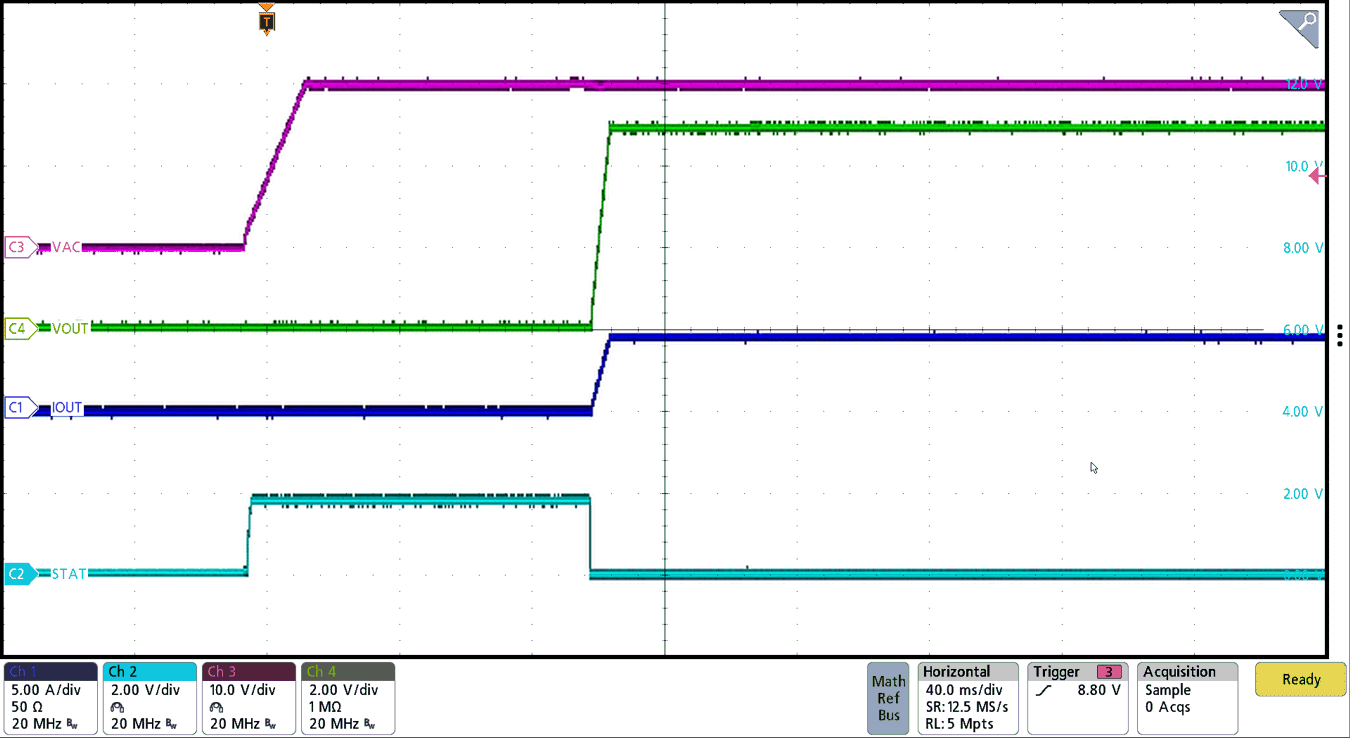
| VAC = 20 V |
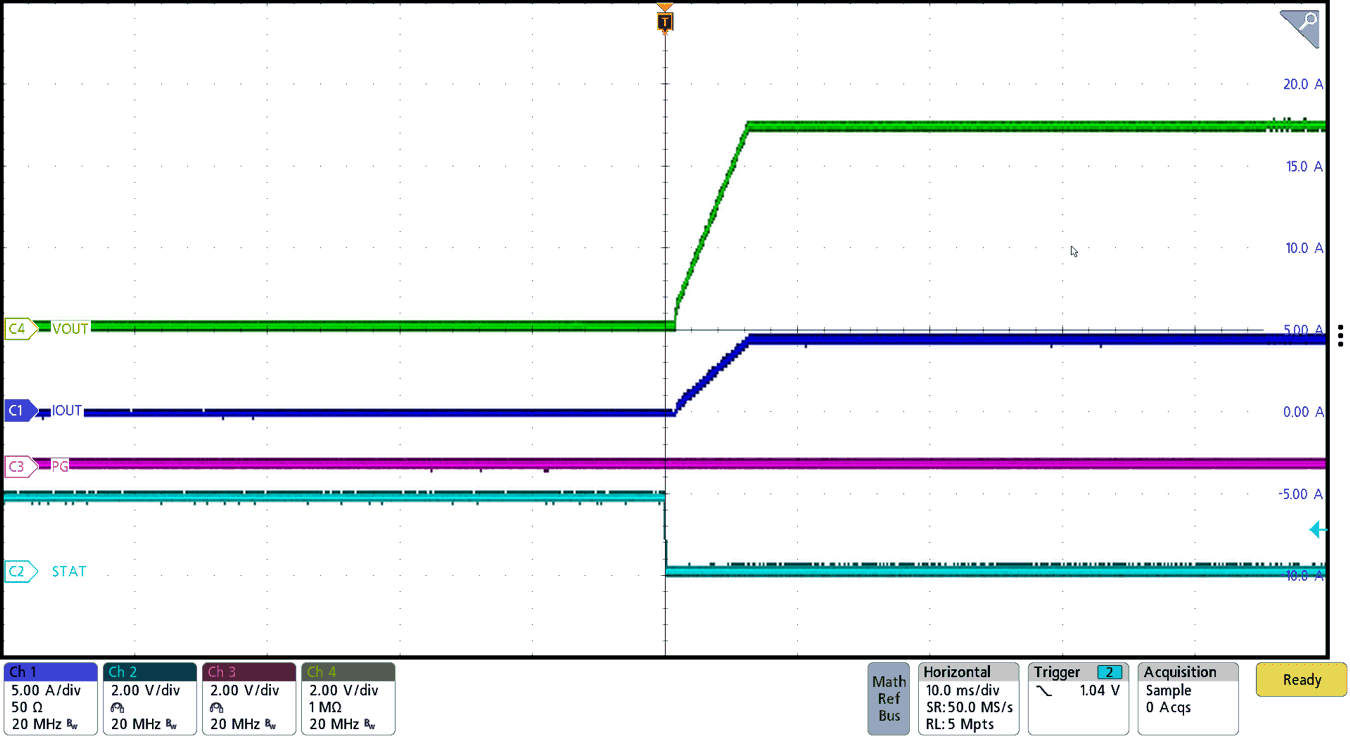
| VAC = 20 V |
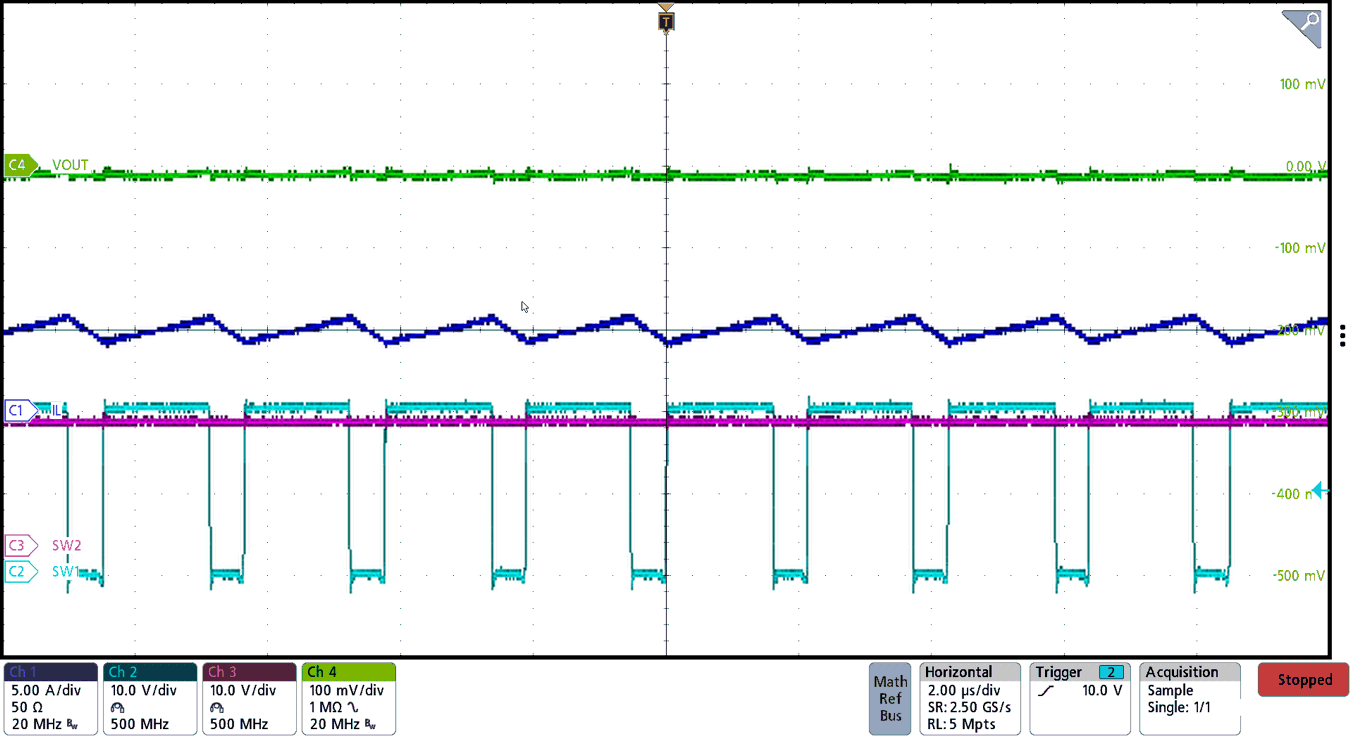
| VAC = 20 V | VOUT = 15 V | IOUT = 5 A |
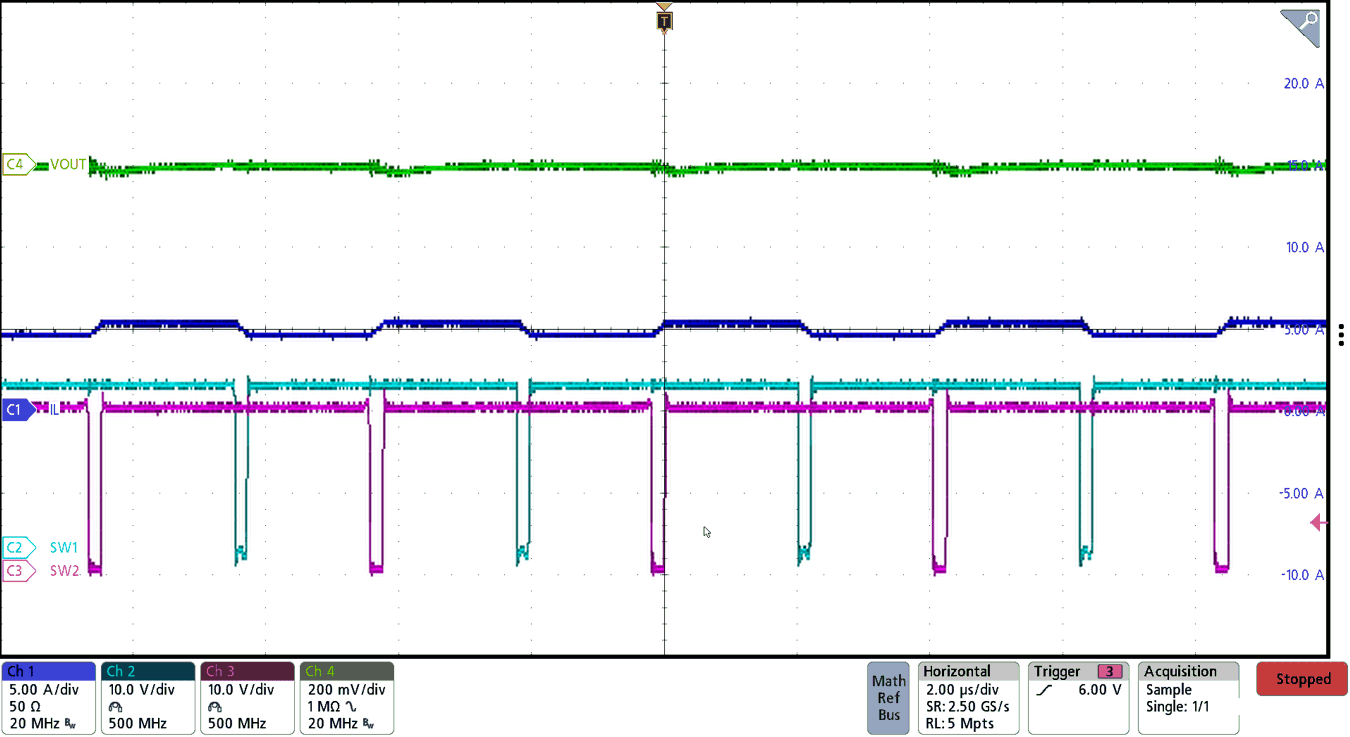
| VAC = 20 V | VOUT = 20 V | IOUT = 5 A |
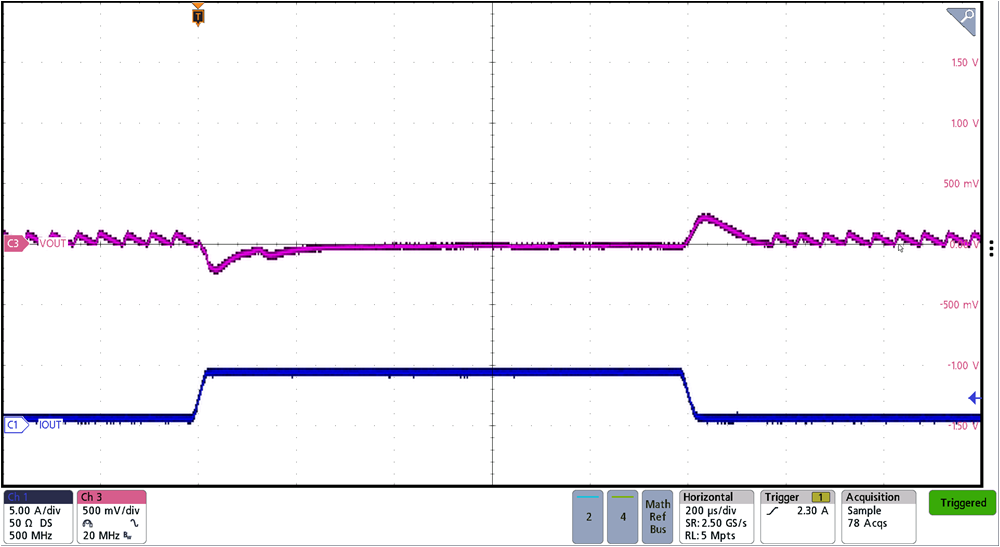
| VAC = 20 V | VOUT = 5 V | ILOAD = 0.5 A → 4.5 A |
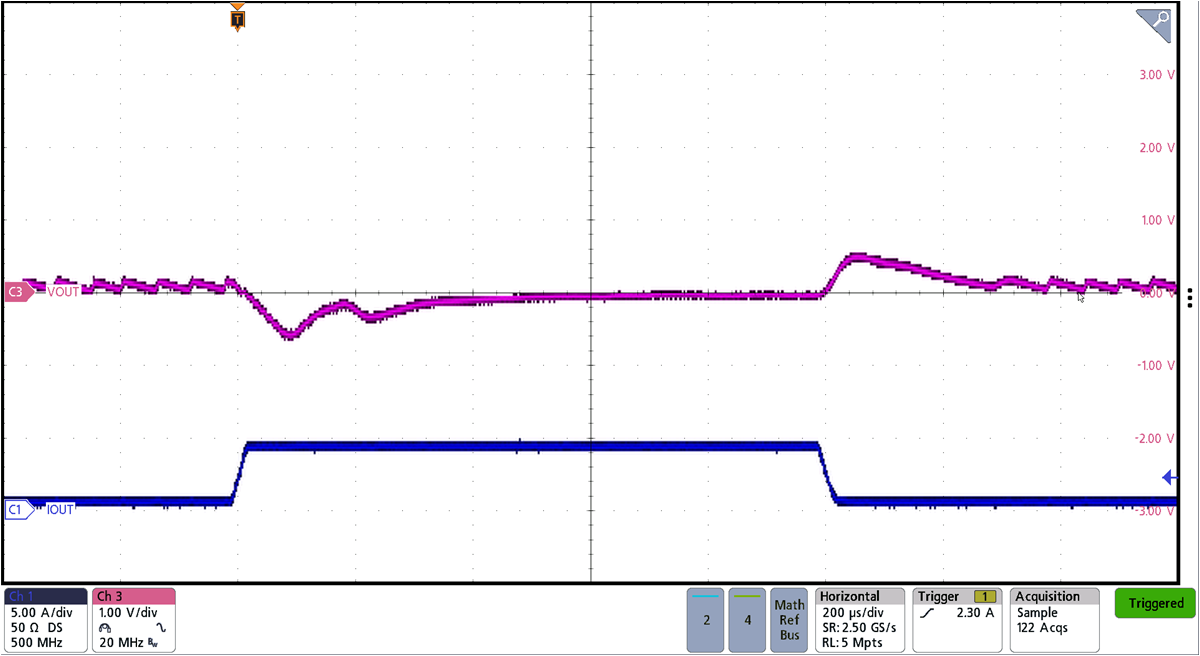
| VAC = 20 V | VOUT = 20 V | ILOAD = 0.5 A → 4.5 A |
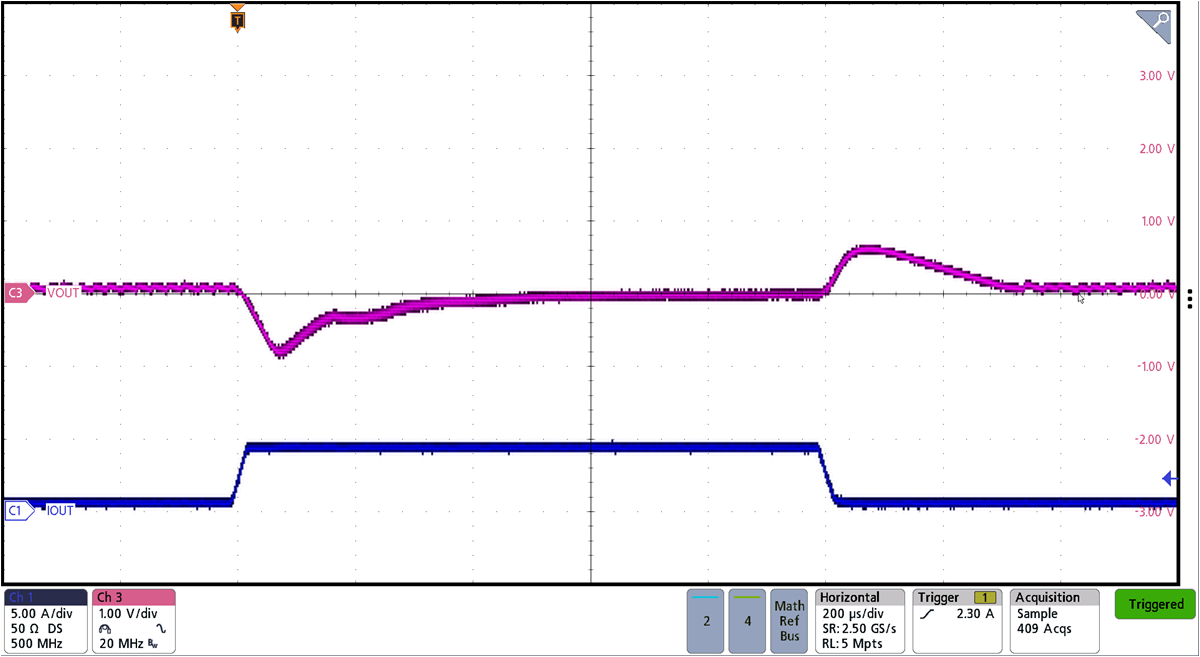
| VAC = 20 V | VOUT = 28 V | ILOAD = 0.5 A → 4.5 A |
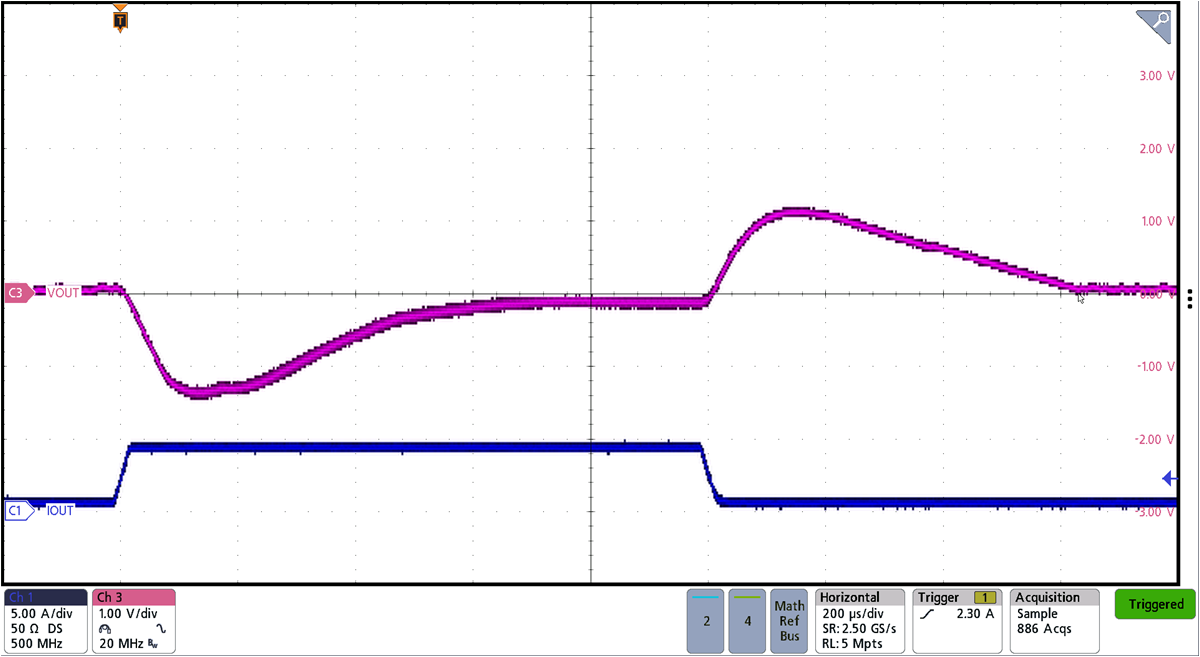
| VAC = 20 V | VOUT = 36 V | ILOAD = 0.5 A → 4.5 A |
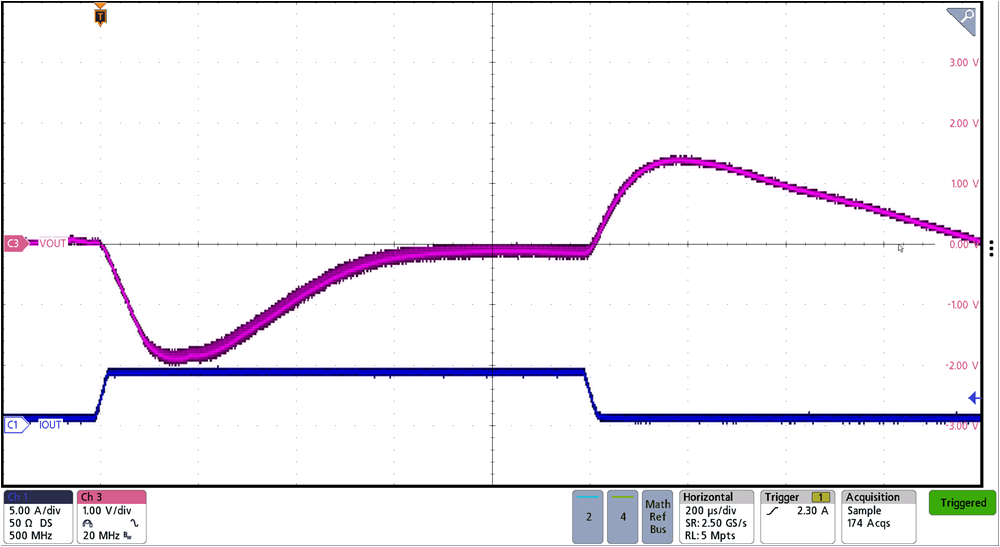
| VAC = 20 V | VOUT = 48 V | ILOAD = 0.5 A → 4.5 A |

| VOUT = 24 V | VAC_REV = 20 V | ILOAD = 4 A |
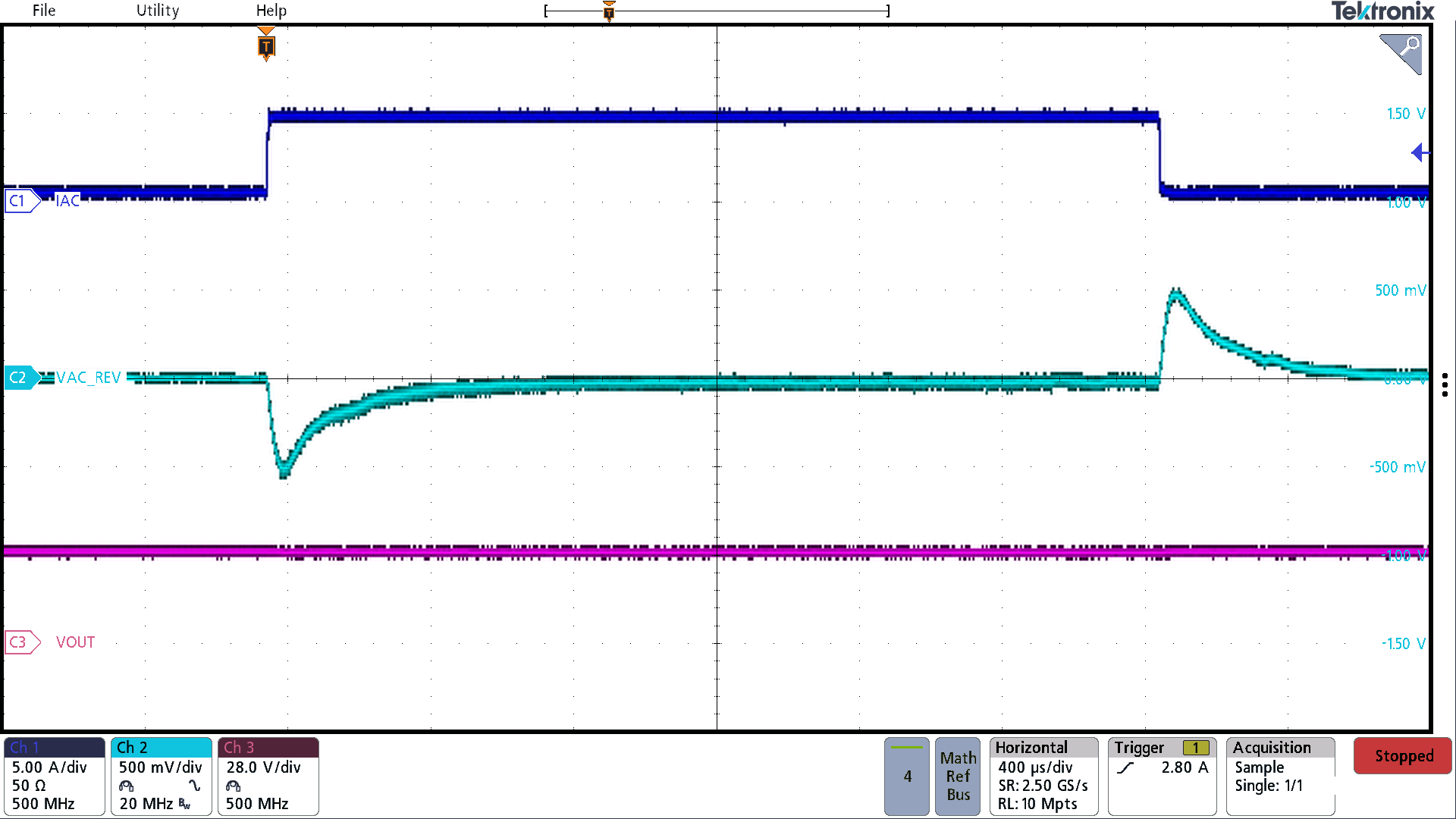
| VOUT = 28 V | VAC_REV = 28 V | ILOAD = 0.5 A → 4.5 A |
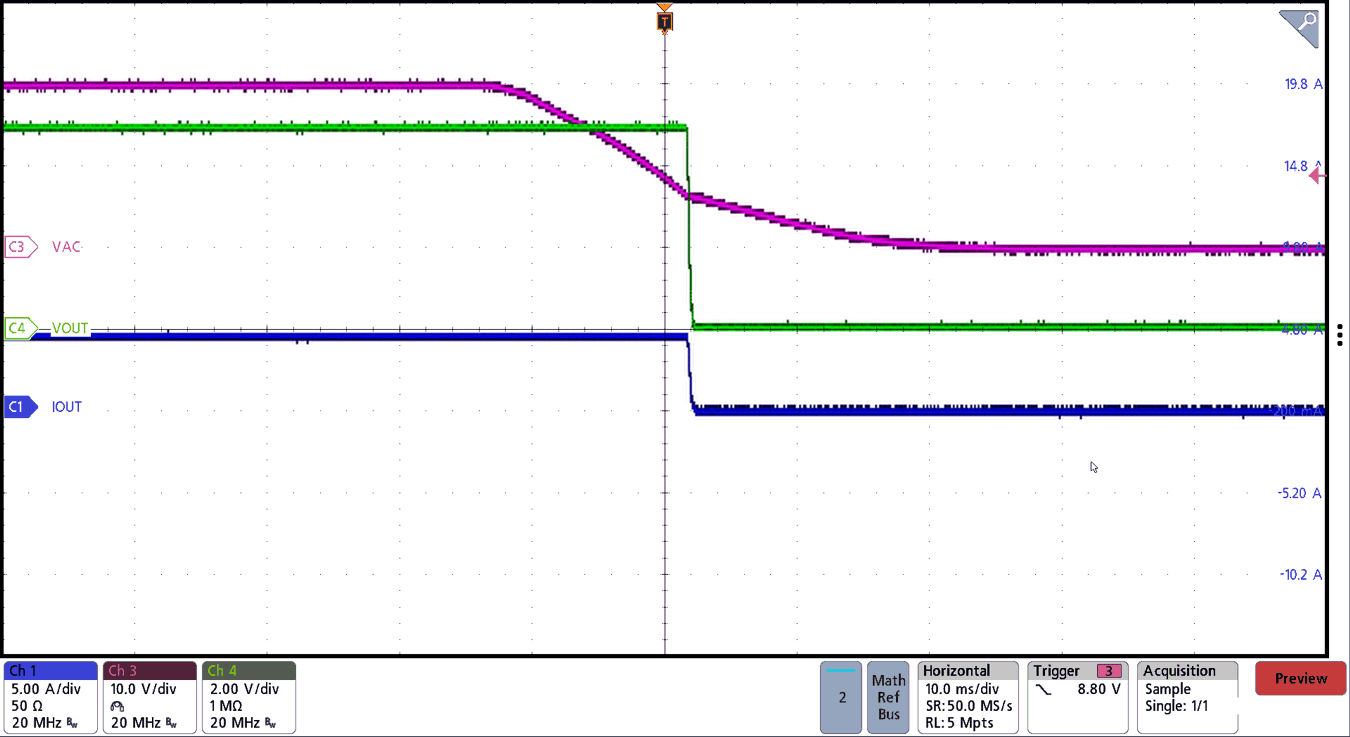
| VAC = 20 V → 0 V |
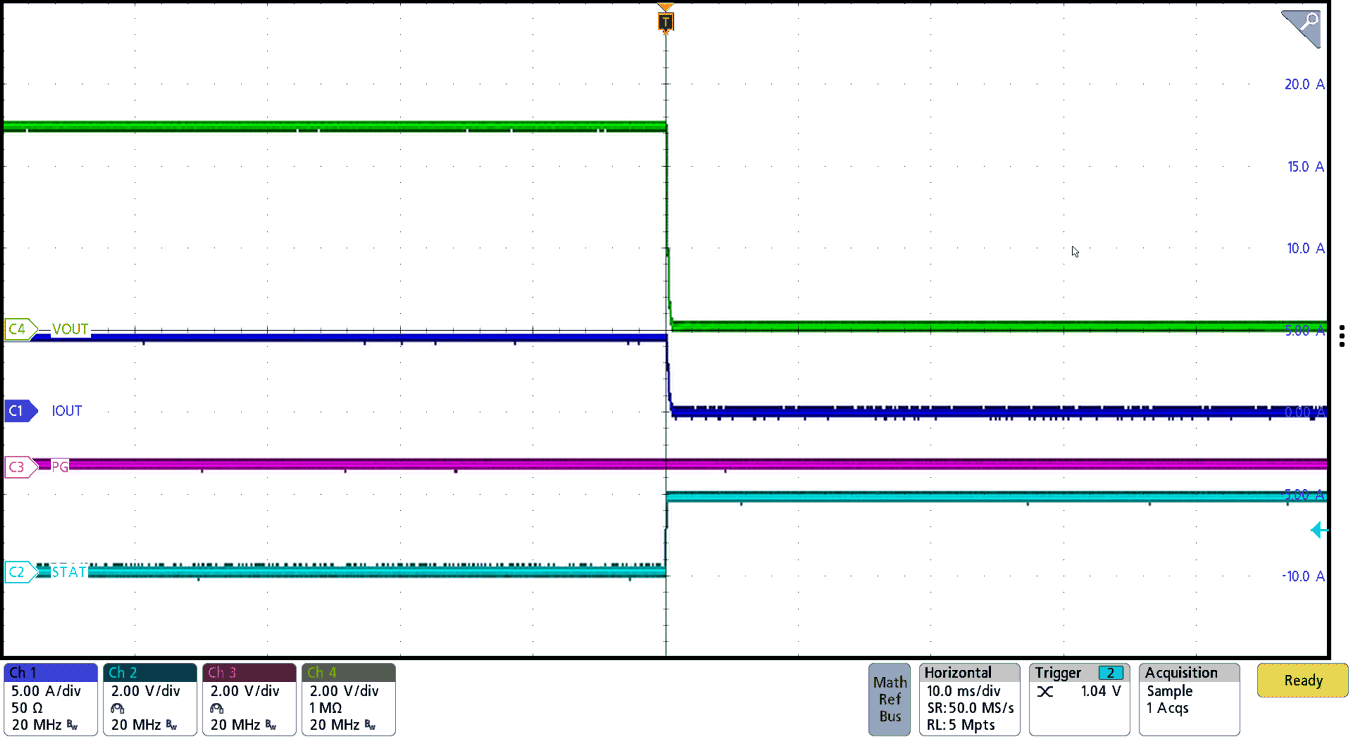
| VAC = 20 V |
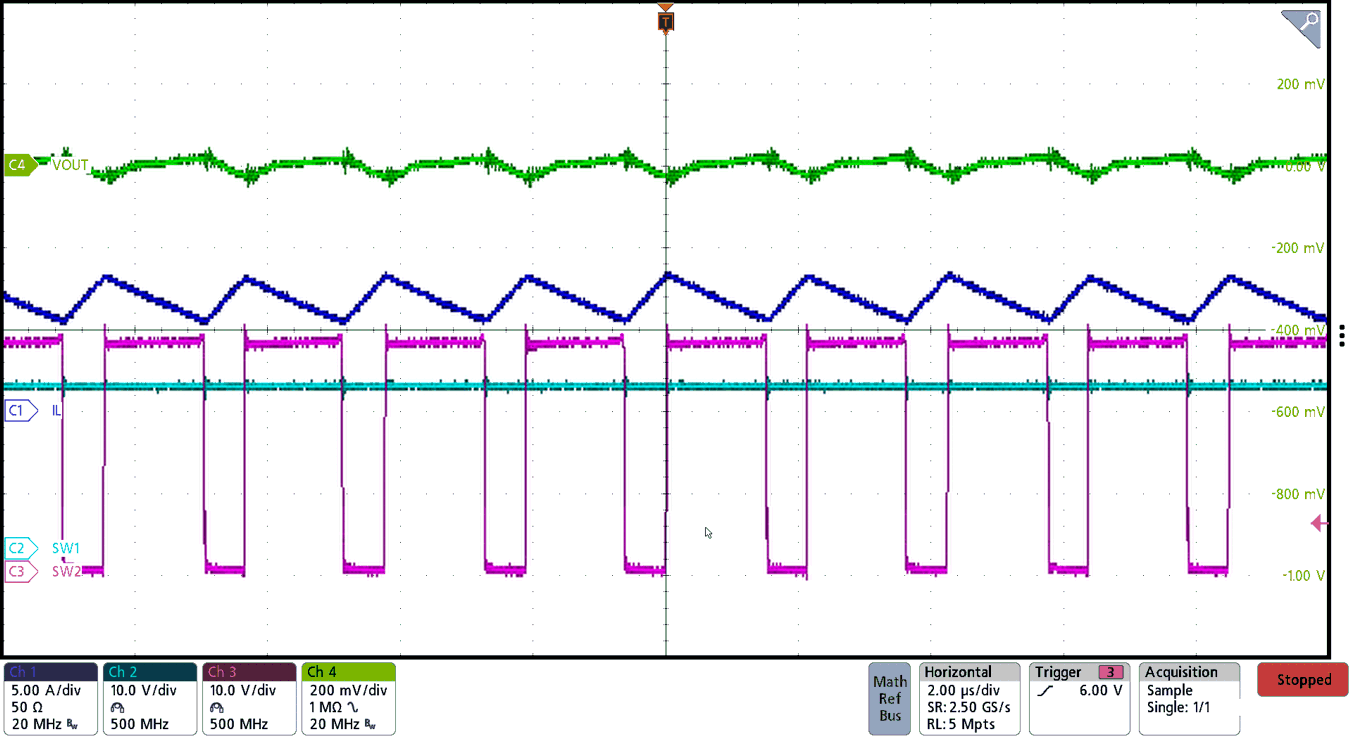
| VAC = 20 V | VOUT = 28 V | IOUT = 5 A |
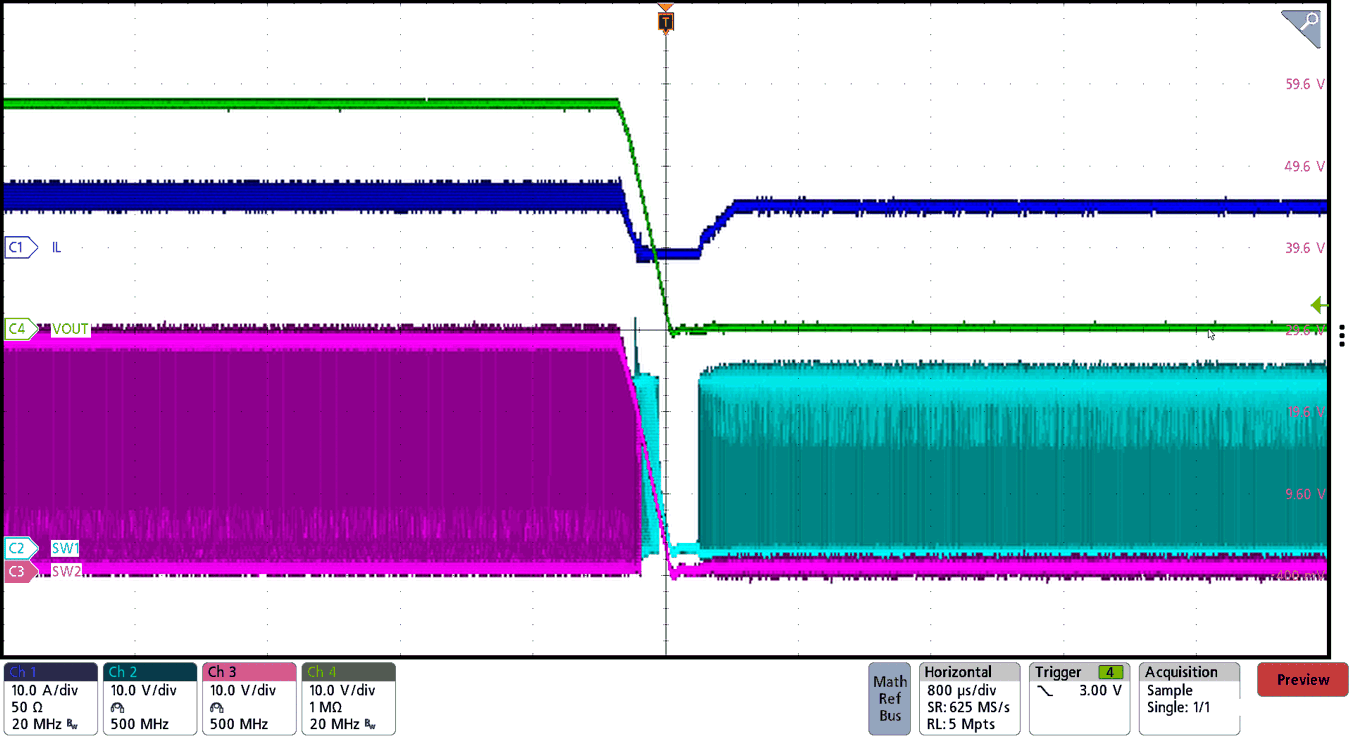
| VAC = 20 V |
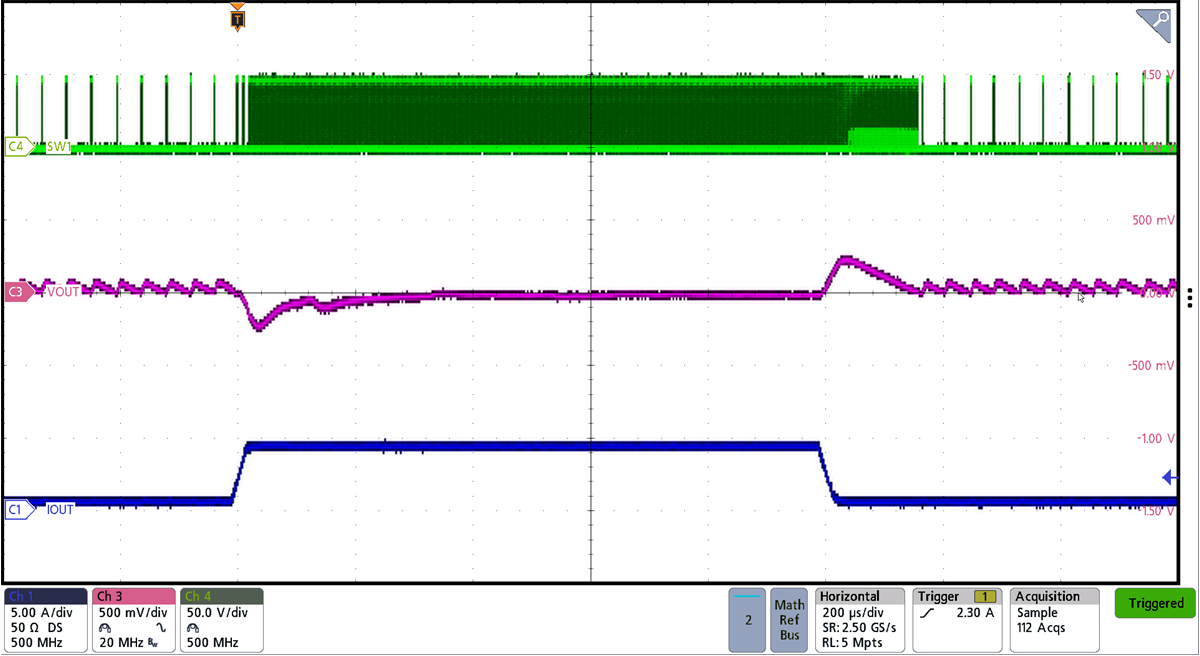
| VAC = 48 V | VOUT = 5 V | ILOAD = 0.5 A → 4.5 A |
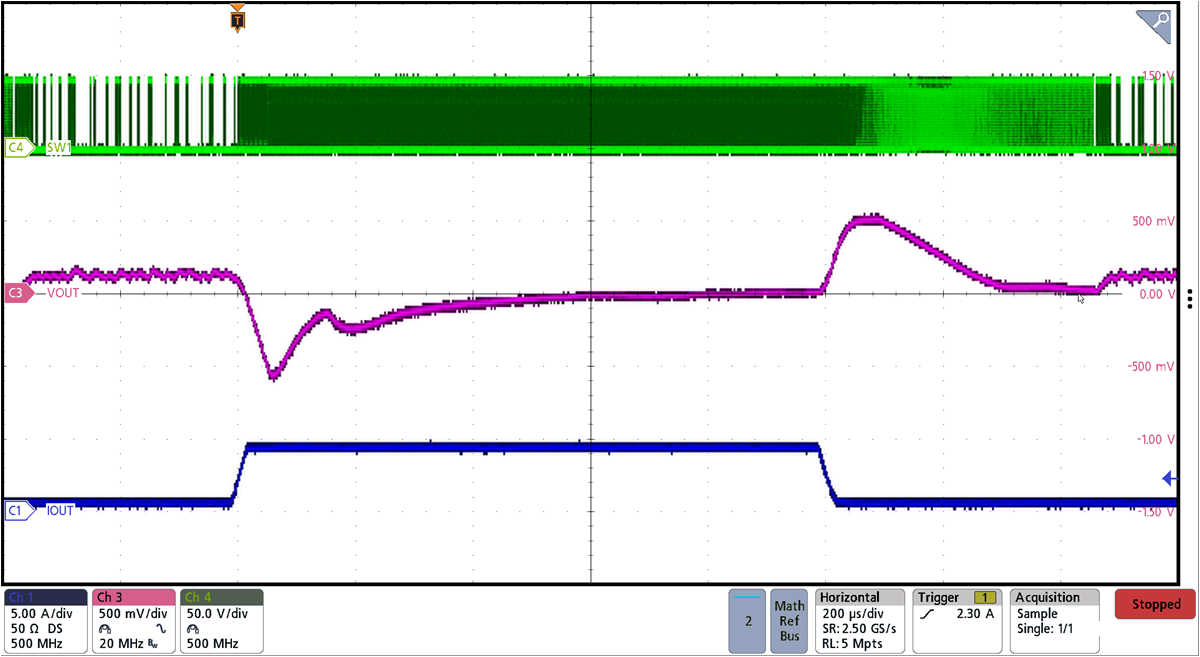
| VAC = 48 V | VOUT = 20 V | ILOAD = 0.5 A → 4.5 A |
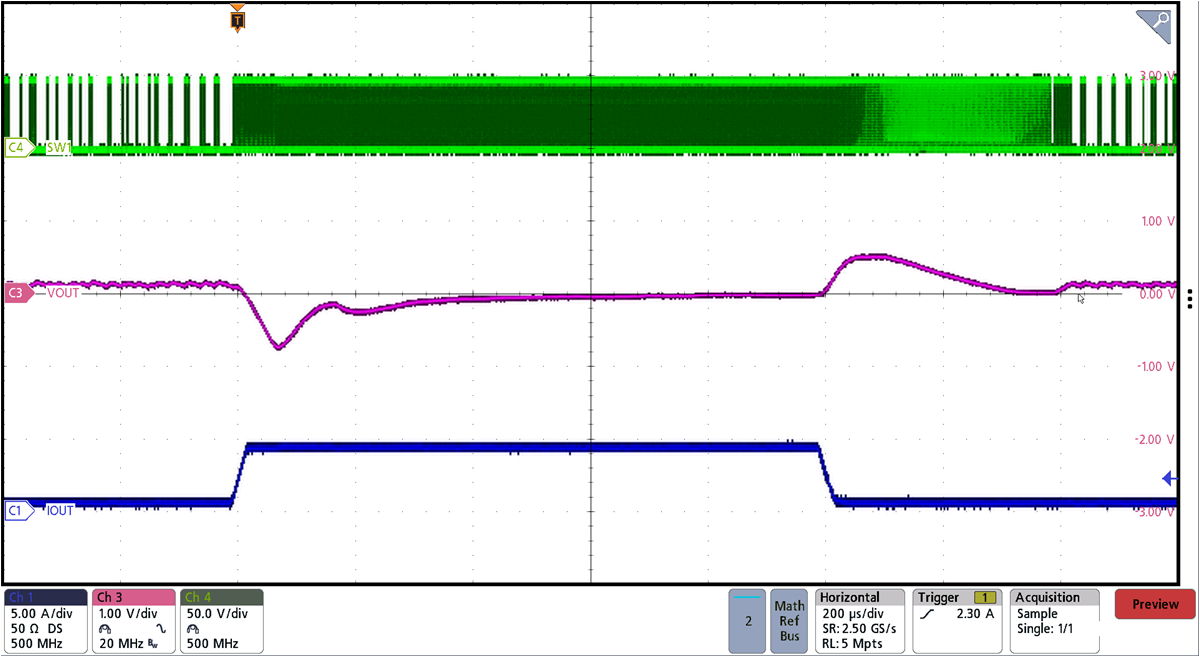
| VAC = 48 V | VOUT = 28 V | ILOAD = 0.5 A → 4.5 A |
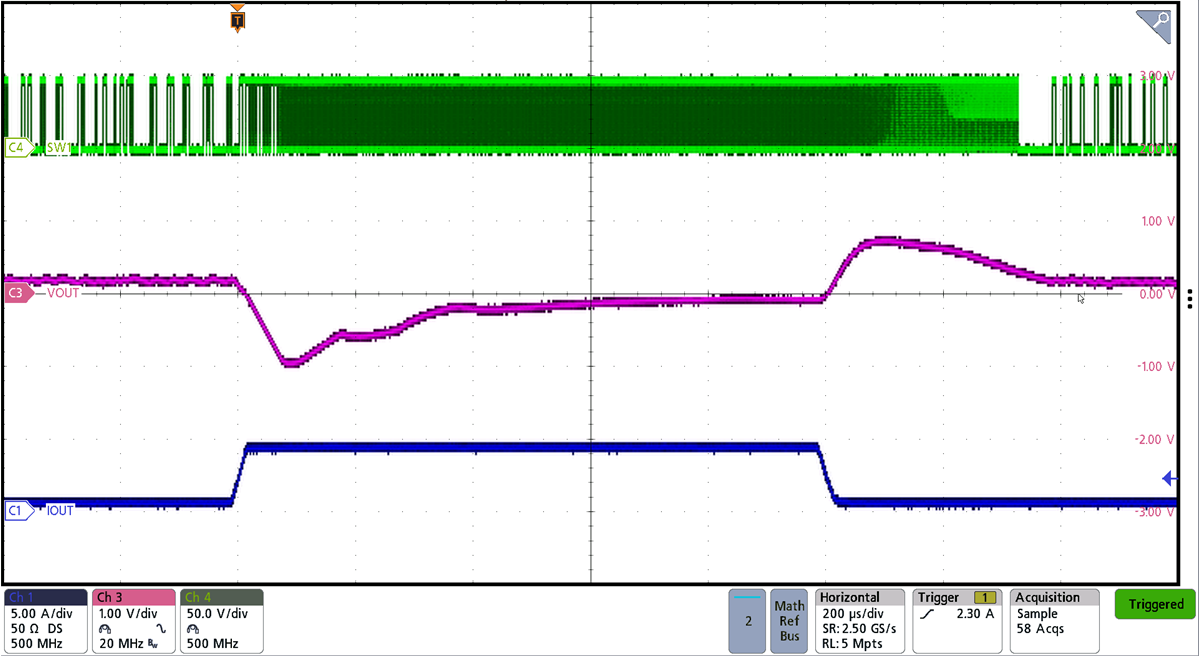
| VAC = 48 V | VOUT = 36 V | ILOAD = 0.5 A → 4.5 A |
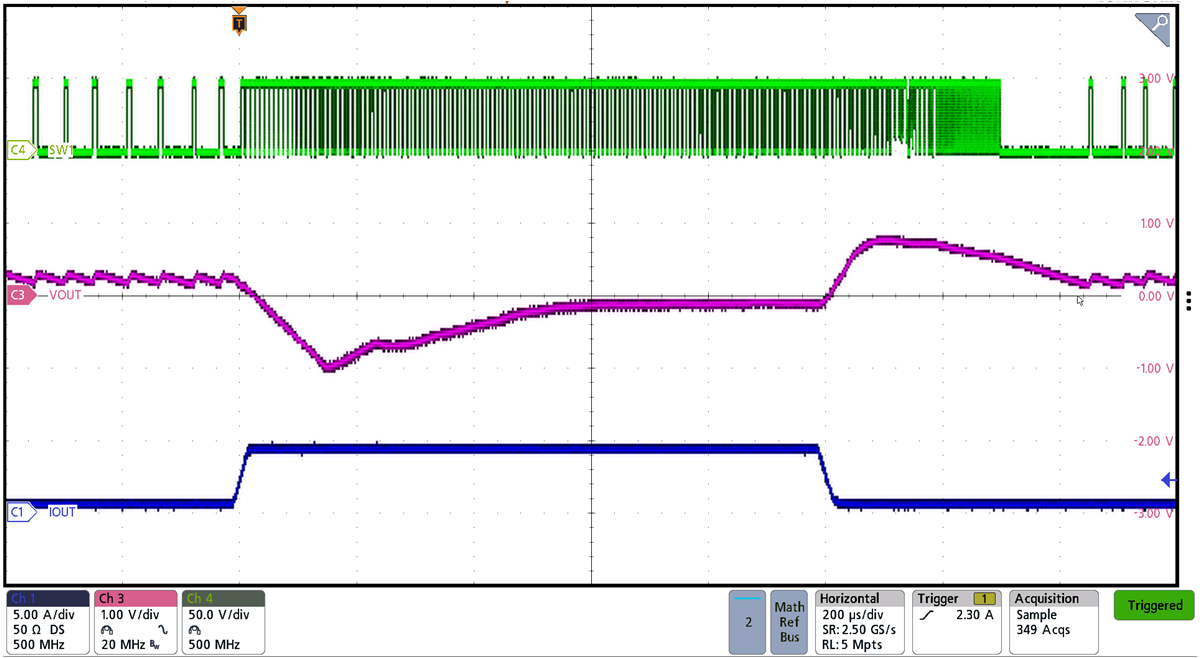
| VAC = 48 V | VOUT = 48 V | ILOAD = 0.5 A → 4.5 A |
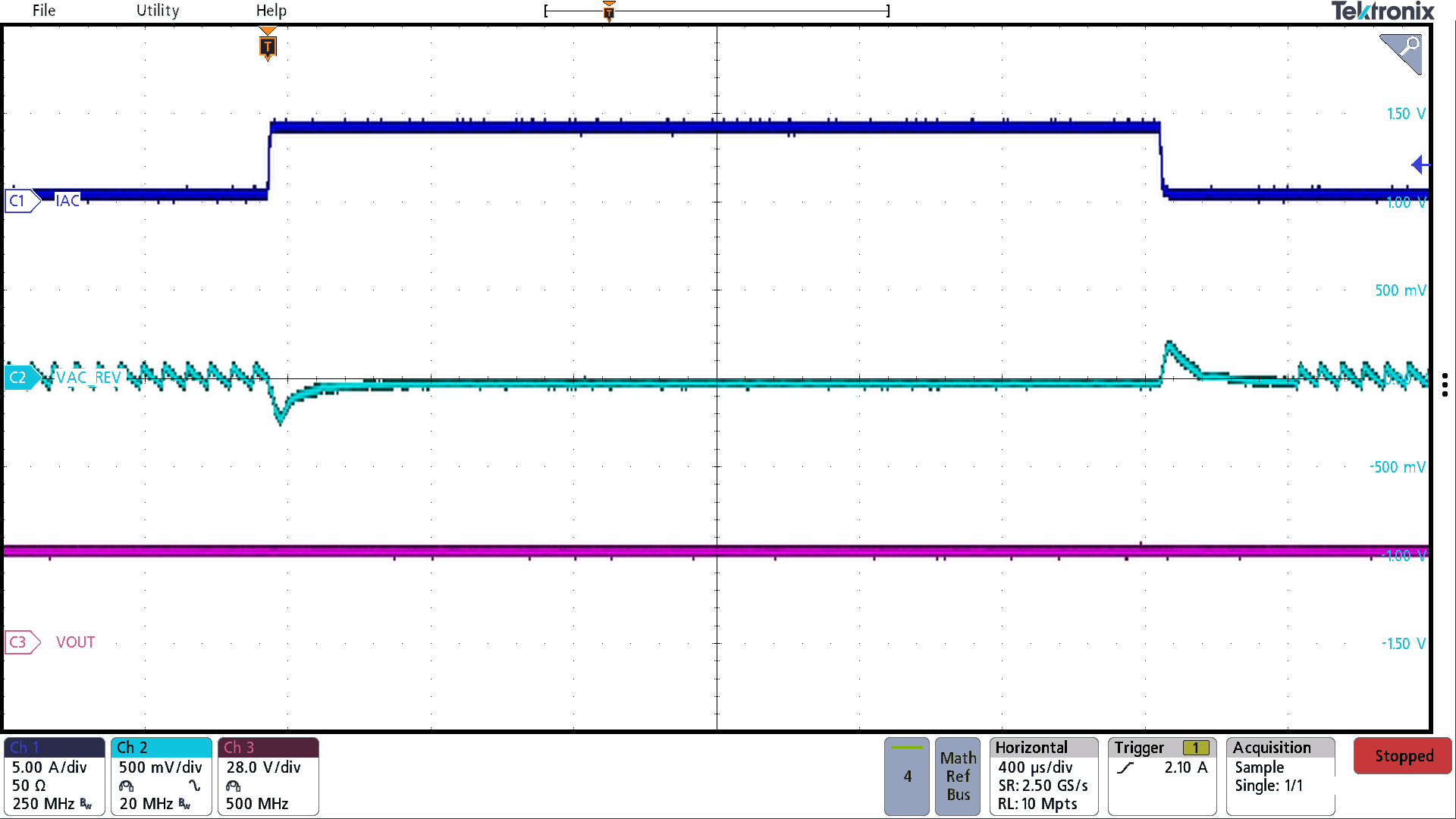
| VOUT = 28 V | VAC_REV = 5 V | ILOAD = 0.5 A → 4.5 A |
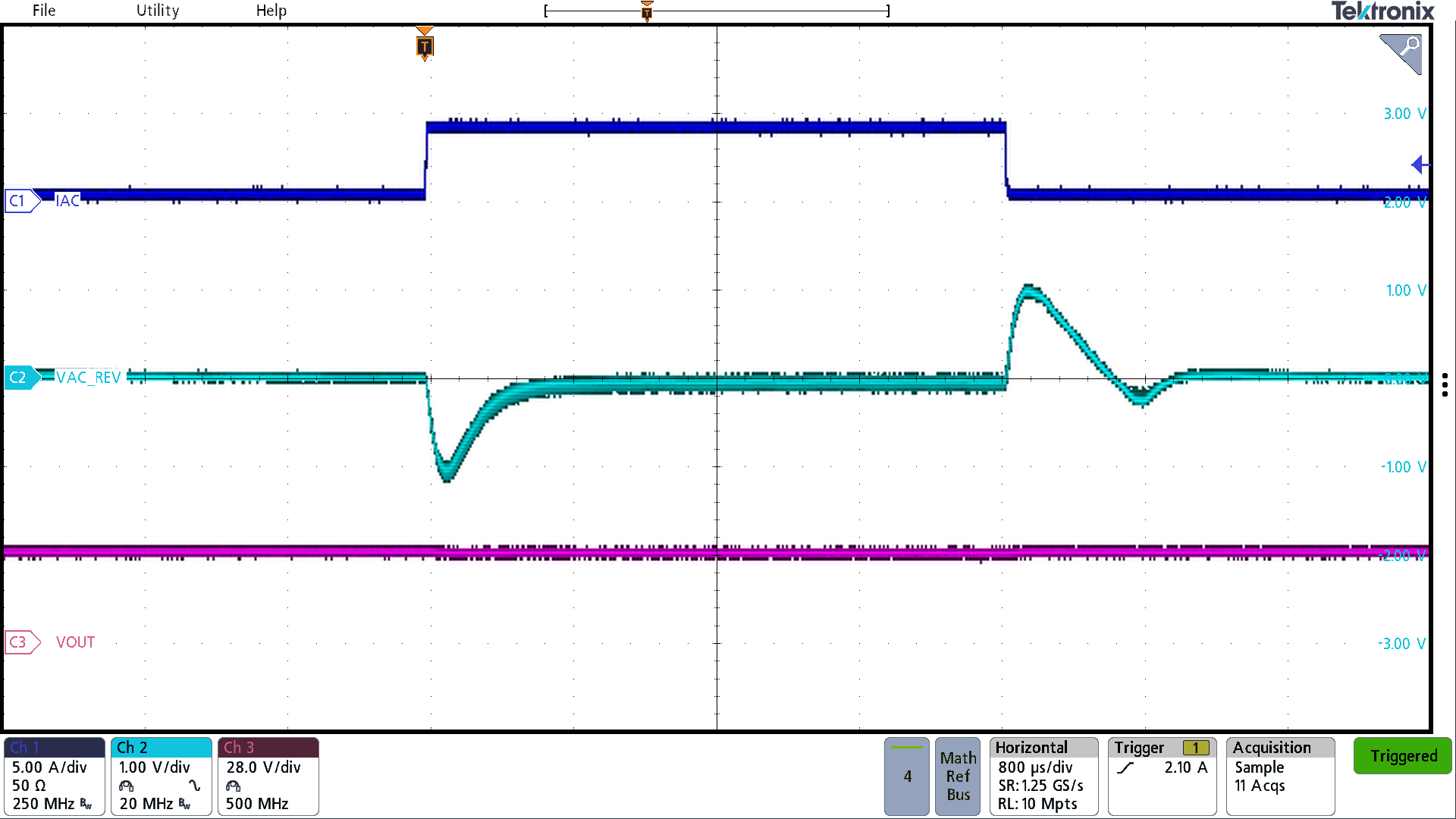
| VOUT = 28 V | VAC_REV = 48 V | ILOAD = 0.5 A → 4.5 A |